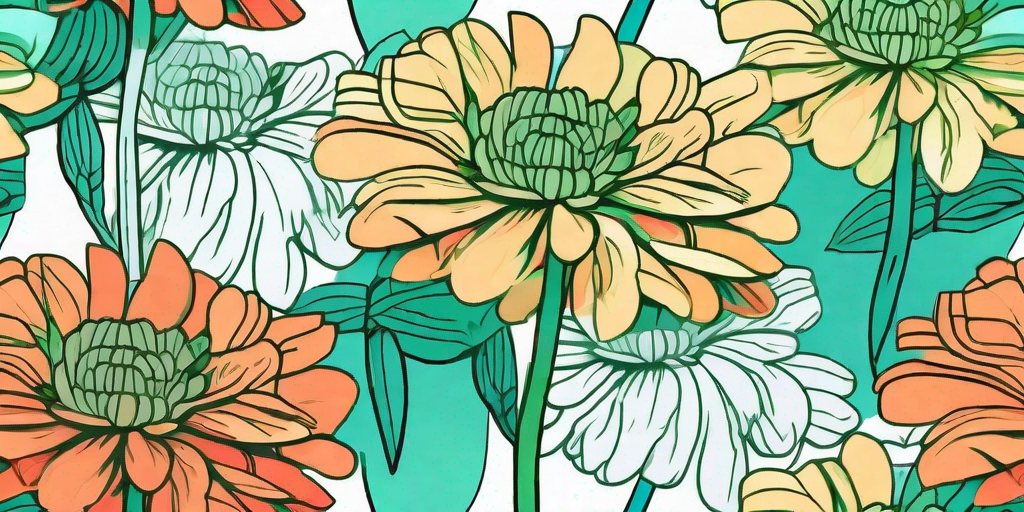
Zinnias, the showstoppers of the garden world, are known for their vibrant hues and their ability to bloom in even the most challenging conditions. These hardy flowers are not just a feast for the eyes, but also a delight for the novice gardener. Why, you ask? Because they're as easy to grow as stealing candy from a baby. Not that we're endorsing such behavior, of course.
Understanding the Zinnia: A Flower Like No Other
Before we dive into the nitty-gritty of growing zinnias, let's take a moment to appreciate these floral wonders. Zinnias are annuals, meaning they complete their life cycle in one growing season. They come in a variety of shapes and sizes, from the petite and delicate to the large and showy. And let's not forget about the color spectrum they cover - it's like a rainbow decided to settle in your garden.
But the beauty of zinnias isn't just skin (or petal) deep. These flowers are also known for their hardiness. They can withstand harsh sunlight, poor soil, and even forgetful gardeners who occasionally neglect their watering duties. In short, zinnias are the superheroes of the plant world, minus the capes.
The Origin Story of Zinnias
Zinnias hail from the dry grasslands of the southwestern United States, Mexico, and Central America. They were named after Johann Gottfried Zinn, a German medical professor who had a penchant for botany. However, it's safe to say that zinnias have come a long way from their humble beginnings, and are now a beloved addition to gardens worldwide.
Fun fact: The zinnia is also known as "everyone's flower," which is quite fitting considering its easy-going nature. It's like the friend who's always up for anything, whether it's a fancy garden party or a casual hangout by the porch.
The Art of Growing Zinnias
Now that we've established our admiration for zinnias, let's get down to business. Growing zinnias is a straightforward process, but there are a few tricks that can help you get the most out of your plants.
Firstly, zinnias love the sun. They're like the beach bums of the plant world. So make sure to plant them in a spot that gets at least six hours of sunlight each day. Secondly, while zinnias are tolerant of poor soil, they do appreciate a little TLC. So, enrich your soil with compost or a slow-release fertilizer for best results.
Planting Zinnias: A Step-by-Step Guide
- Choose a sunny spot in your garden.
- Prepare the soil by removing any weeds or rocks.
- Add compost or slow-release fertilizer to the soil.
- Sow the zinnia seeds directly into the soil.
- Water the area thoroughly.
- Wait for the magic to happen!
Remember, zinnias are low-maintenance plants. They don't need constant coddling or attention. Just give them their daily dose of sunshine, water them regularly, and they'll reward you with a spectacular display of blooms.
Zinnias and Pests: A Love-Hate Relationship
While zinnias are hardy plants, they do have a few enemies. Aphids, spider mites, and powdery mildew can sometimes cause trouble. But don't worry, these issues are easily managed with a little bit of vigilance and care.
Aphids and spider mites can be controlled with insecticidal soap or a strong blast of water from the hose. As for powdery mildew, it's best prevented by providing good air circulation around your plants and watering them at the soil level rather than from above.
Common Zinnia Pests and How to Deal with Them
- Aphids: Use insecticidal soap or a strong blast of water.
- Spider Mites: Same as aphids, insecticidal soap or water works well.
- Powdery Mildew: Ensure good air circulation and water at soil level.
FAQs About Growing Zinnias
When is the best time to plant zinnias?
Zinnias are warm-weather plants, so the best time to plant them is after the last spring frost. They're sun-lovers, remember?
How often should I water my zinnias?
Zinnias don't like to have wet feet, so it's best to water them when the top inch of soil feels dry to the touch. Overwatering can lead to root rot, which is about as fun as it sounds.
Do zinnias attract butterflies?
Yes, they do! Zinnias are like the popular kids in school - everyone wants to hang out with them. Butterflies, bees, and hummingbirds are all attracted to their vibrant colors and sweet nectar.
Conclusion
So there you have it, folks. The secret to growing stunning zinnias is no secret at all. With a little bit of sun, a dash of care, and a whole lot of love, you can transform your garden into a zinnia paradise. And remember, gardening is not just about the destination, but also the journey. So take a moment to stop and smell the zinnias. You won't regret it.















